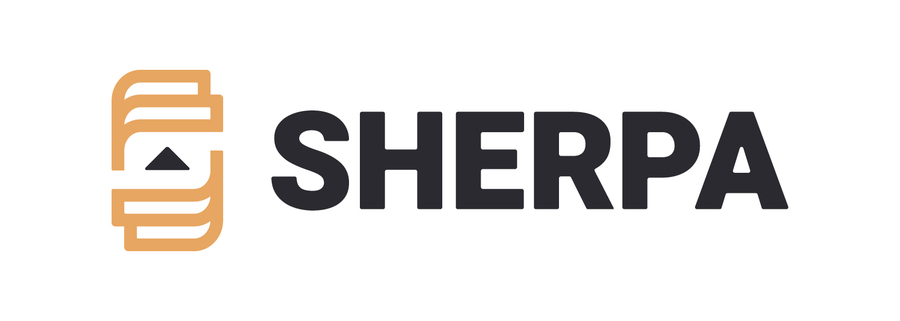Ideas on How to Save Tons of Time and Money in Your Digital Transformation Project
Recently, I had the chance to engage in a Digital Transformation opportunity in Mexico, with a very large, multi-business unit manufacturer. I was excited at the prospect of applying years of experience in leveraging IOT technology, to drive business and culture change for them. Upon engaging the manufacturer, it quickly became apparent that what the operations leader needed most was not a long and tedious Digital Transformation journey, but some basic Lean Six Sigma projects to be done as a step change, and for them to listen to their consumers.
‘There’s no need to launch into a multi-year journey’
Imagine having to tell a senior leader that he doesn’t need to hire his preferred corporate Systems Integrator, even though project approvals are already signed off; that there’s no need to launch into a multi-year journey, even though everyone is now prepared to do so. Picture me bursting the bubble, by stating that what they really need is just a couple of one-week Lean Six Sigma workouts, requiring, at most, two to three senior LSS experts, and to ensure they are integrating the voice of their consumers. The silence that followed my assessment is the key reason behind this blog. The message was not to overcommit, but to take baby steps, fine-tune, get it going again, learn, digest the change, transfer skills and then decide if you need a Digital Transformation project.
‘Most projects that start with a DT concept should really begin as LSS projects’
Social media, national conventions, and webinars, all talk Digital Transformation. The large Top 5 Systems Integrators have adjusted their business plans to transition their teams into DT experts. If you intend to remain an industry player, you probably need some help in reinventing yourself to remain competitive. But in my opinion, most projects that start with a DT concept should really begin as LSS projects.
Why? Well first, let me share some context.
‘You wouldn’t want to change just for change’s sake and end up worse’
For the sake of article length, I’ll assume you understand the promise of a Digital Transformation. Simply put, you need to change and you should leverage digital solutions. But guess what? The first step on that road to change is traveling through the road of improvement first. You wouldn’t want to change just for change’s sake and end up worse, right? It happens. Improvement is important.
So, if you ask me, this involves starting with something known as the ‘5S’ principle. This Principle, when applied correctly, allows an entity to function ‘effectively.’ The ‘5S’ Principle consists of:
- Sorting between the essential and non-essential within the process, to ensure processes are clutter-free and operate effectively.
- Straighten all items within the process to ensure the required materials are in place to assist in reducing waste and maximizing operational excellence.
- Shine to ensure that all materials are clean, identifiable and easily located to avoid search time.
- Standardizing processes for consistency and streamlining of steps within the process, to avoid a disjointed or silo process.
- Sustaining a safe and healthy work environment to ensure the continued operation of the process.
‘…a must-have before embarking on any Digital Transformation journey’
The 5 Principles above will ensure an efficient and effective process that will provide value to the end customer. In my view, the above is a must-have before embarking on any Digital Transformation journey. Most end-users make the mistake of thinking the above only applies to the industrial sector. It does not! The above applies to any non-manufacturing process.
The second step on the road to improvement involves setting up a Customer Value Chain (CVC). To set up a CVC you must first ensure that customer feedback is received through the defined channels and measured appropriately. This ensures the business processes run at the target. Customer Feedback can be received in a number of ways:
- Active: This is where businesses actively seek direct customer feedback. This can be facilitated in the form of a workshop or focus study group.
- Receptive: This is where the business enables the customer to voice available feedback. A survey link or feedback form are prime examples.
- Indirect: This is where the business receives feedback indirectly via a third party for example.
‘The business entity needs to understand value creation’
Once you have setup your feedback avenues, you can construct the Customer Value Chain. This enables customer voice measurement metrics to ensure the business stays within an acceptable range or target. If this measure falls out of range, we need to drive a root cause analysis to improve the process further. Lastly, the business entity needs to understand value creation. Value can be added to a product or service via three known avenues:
- More of the product or service can be added, at the same cost to the customer. For example, selling a newer model for the same price as last year’s model.
- The customer is given something that they are willing to pay for. When I go to Chipotle, I am offered and charged more for adding guacamole to my burrito.
- A feature is added to the product or service, like when Starbucks provides a corrugated paper sleeve for their disposable coffee cup.
Value can be added via any combination of these methods, to any product or service but should always refer to the customer feedback that‘s been collected. If the value you’ve just added isn’t valued by the customer, then it’s not real value in the first place.
‘Applying 5S projects doesn’t appeal to large Systems Integrators’
By first working on implementing the 5S Principle, streamlining disjointed and convoluted processes, then constructing a Customer Value Chain to add value to your product or service, you can significantly reduce the time and money that might’ve been spent on a full-blown Digital Transformation journey. I know why applying 5S projects doesn’t appeal to large Systems Integrators. It’s hard to feed a voracious 300K employee consulting firm if you only do these agile, short sprint yet high-value projects.
Every week, I’m detecting customer services issues, quality issues, productivity issues in a myriad of companies. I detect business and people issues in appliance manufacturers, banks, retailers, wholesalers, financial institutions, grocers, CPG, 3PL, and industrial conglomerates. The key areas I see affected are production, customer service, quality, cultural transformation or business reliability.
‘…you could readily solve 80% of your issues’
The funny thing is, that by applying 5S projects within a Lean Six Sigma context, by integrating “Reliability as a System” or even Agile, Operational Excellence methodologies, you could readily solve 80% of your issues. These proven methodologies tackle waste and increase customer value.In doing so, you could optimize the time and resources that would have been deployed on a potentially unnecessary Digital Transformation project.
Seemingly big problems don’t always need BIG Digital Transformations. Take it step by step and try Lean Six Sigma first as your step change effort.
If you’ve enjoyed this article please share it and remember to follow us on LinkedIn at ENABLE OT to catch our next set of digital, industrial blogs. You can also subscribe to our YouTube Channel at ENABLE OT.
Mel Ramos is a Managing Partner for ENABLE OT. Previously, he was the Software Sales Leader for GE Digital for Latin America. He has two decades implementing global projects in the digital industrial space and is considered the thought leader behind the “Institutionalization of Reliability as a System” framework. He is a graduate of Pomona College in Claremont, CA and currently resides in Orlando, FL.



